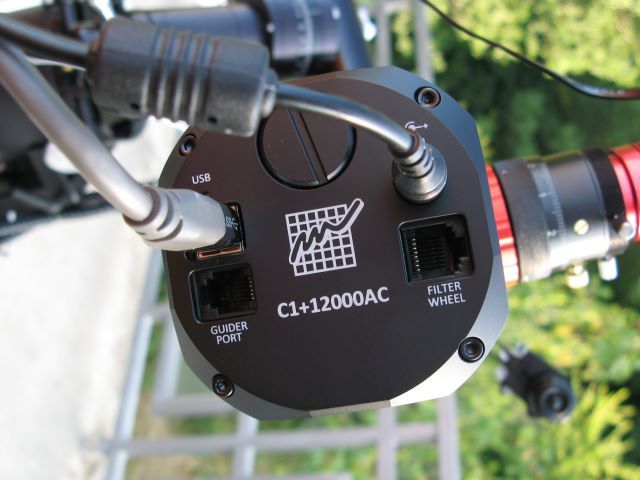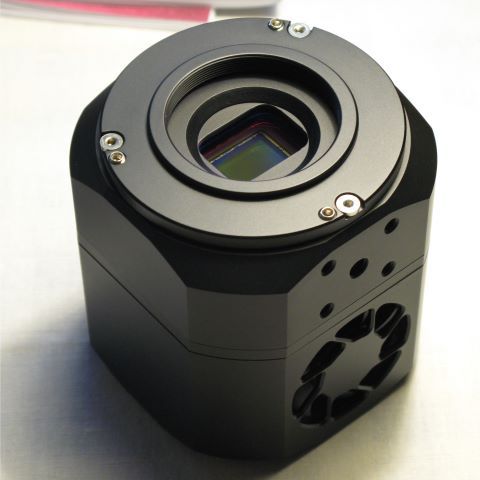
I was quite happy with my ZWO ASI178MC Cool camera, which was the first OSC camera I've ever got. Taking images with it was a lots of fun, and OSC really makes imaging and processing simpler. Unfortunately, for that simplicity you pay with somewhat diminished sensitivity and resolution. After couple of years I've decided that it is time to get a bit more versatile OSC camera.
My choice was Moravian Instruments C1+12000AC camera. The camera is based on the color version of Sony IMX304 CMOS sensor. The camera is very compact, weights 675 g and build quality is excellent. Its matte black finish gives the camera very professional look. Camera is delivered in a hard case, with all the necessary cables and power supply included. All the connections are situated on the back of the camera: external power, USB 3.0, guider port and filter wheel connection, as well as desiccant plug.
Regulated Peltier cooling can cool the sensor more than 40 °C below the ambient temperature. Imaging is possible using USB port only as power source, but for active cooling external power supply (included) is necessary.

